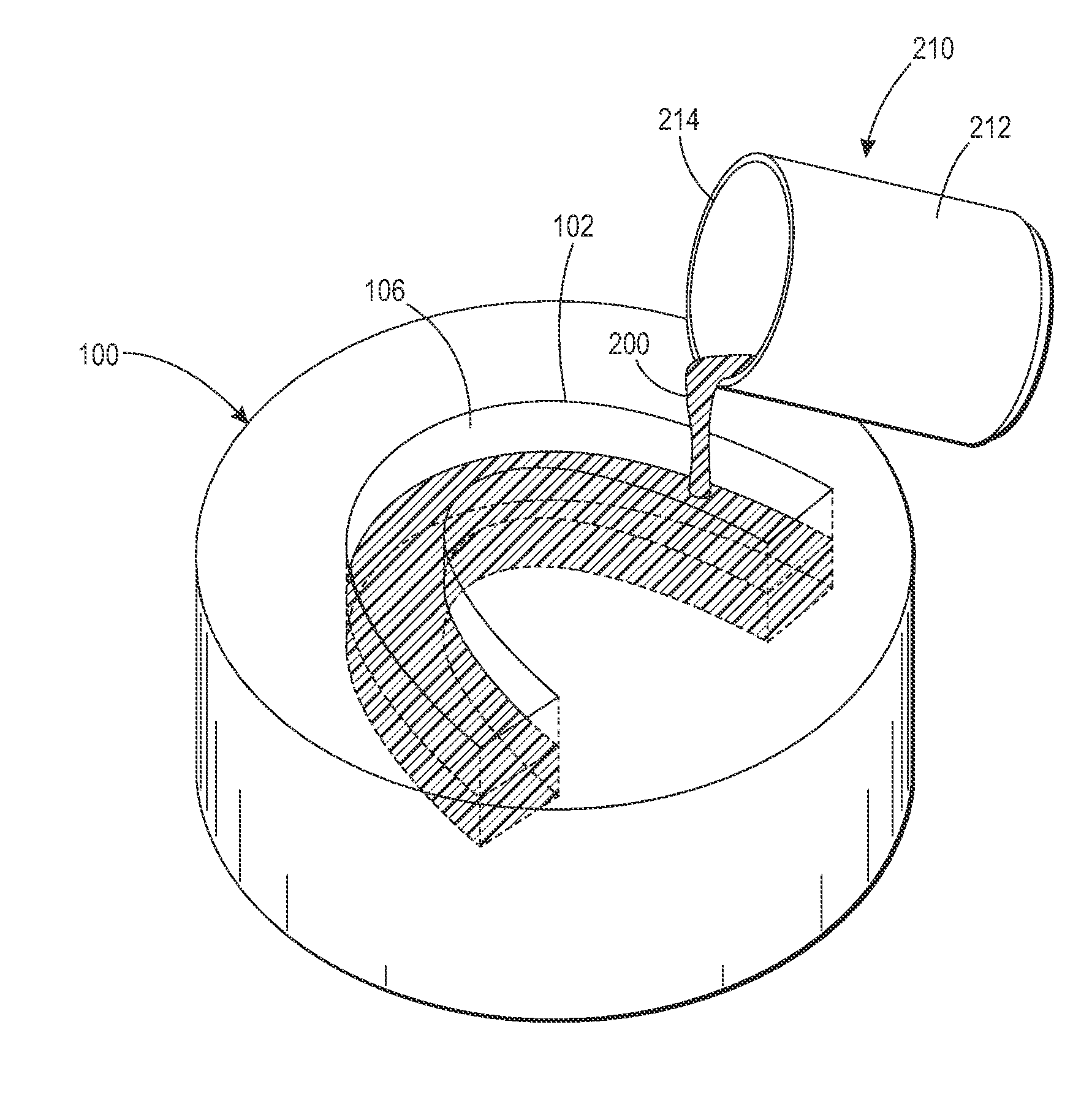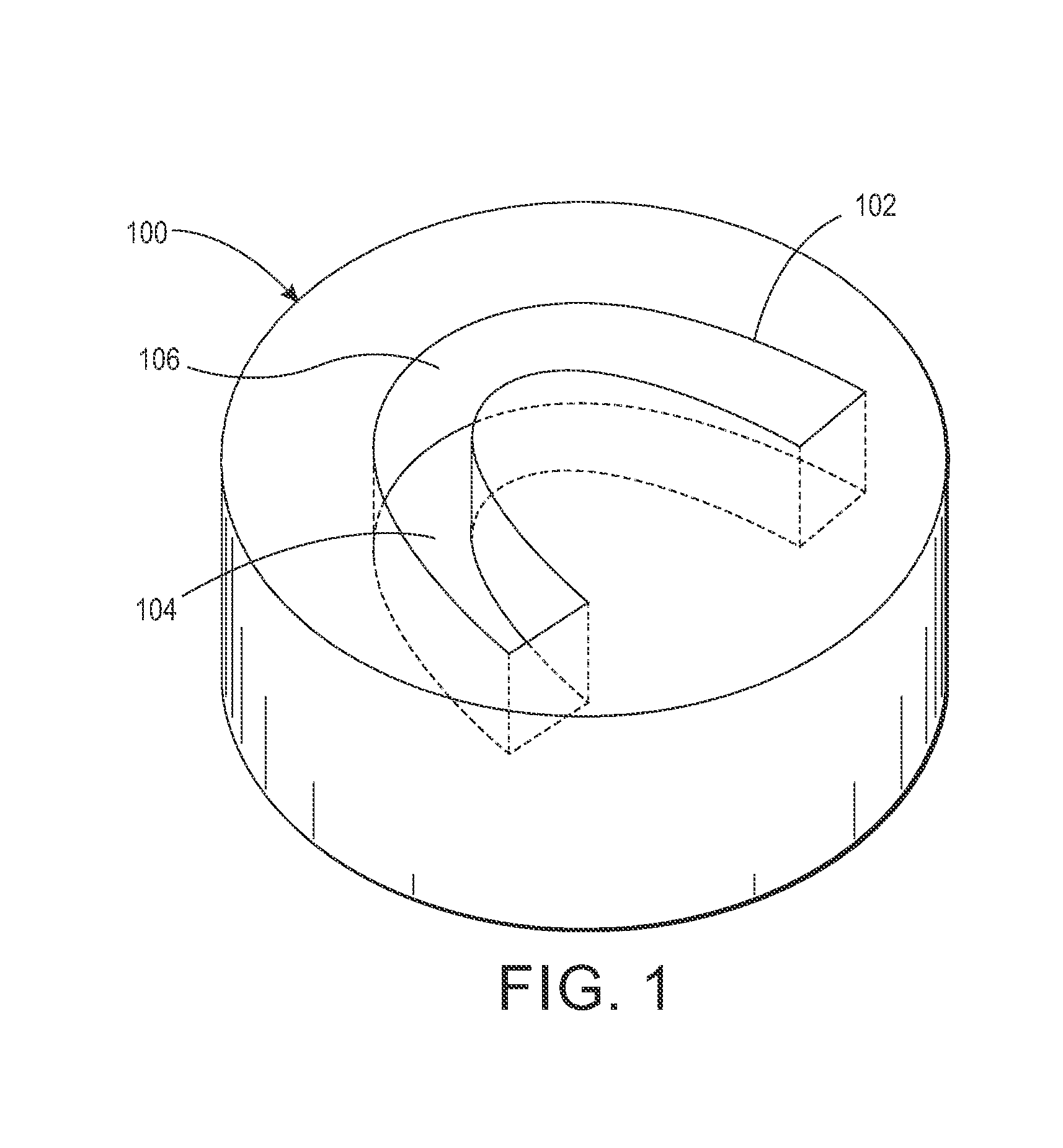Molding artificial teeth in denture base disc
a technology of denture base and artificial teeth, which is applied in the direction of artificial teeth, dental prosthetics, impression caps, etc., can solve the problems of denture teeth dislodging from the denture base, and tooth dislocation
- Summary
- Abstract
- Description
- Claims
- Application Information
AI Technical Summary
Benefits of technology
Problems solved by technology
Method used
Image
Examples
Embodiment Construction
[0049]For a general understanding of the present invention, reference is made to the drawings. In the drawings, like reference numerals have been used throughout to designate identical elements.
[0050]The Applicant's method and apparatus for molding artificial teeth in a denture base material will now be described with reference to FIGS. 1-7. Turning first to FIG. 1, the instant method comprises forming a first cavity 102 in a block 100 of a denture base material. The first cavity 102 has a bottom wall 104 and a side wall 106. The first cavity is formed to correspond to the U-shaped contour of natural teeth as arranged on maxillae or on a mandible. The first cavity is formed by an apparatus that includes a material removal device (not shown). In certain embodiments, the material removal device may be a mill. The mill may be a mill as disclosed in the aforementioned U.S. Pat. No. 8,641,938 of Howe. In certain embodiments, the width of the U-shaped cavity 102 may be about 0.5 inches wi...
PUM
| Property | Measurement | Unit |
|---|---|---|
| temperature | aaaaa | aaaaa |
| depth | aaaaa | aaaaa |
| thickness | aaaaa | aaaaa |
Abstract
Description
Claims
Application Information
 Login to View More
Login to View More - R&D
- Intellectual Property
- Life Sciences
- Materials
- Tech Scout
- Unparalleled Data Quality
- Higher Quality Content
- 60% Fewer Hallucinations
Browse by: Latest US Patents, China's latest patents, Technical Efficacy Thesaurus, Application Domain, Technology Topic, Popular Technical Reports.
© 2025 PatSnap. All rights reserved.Legal|Privacy policy|Modern Slavery Act Transparency Statement|Sitemap|About US| Contact US: help@patsnap.com



